
Riad
Press Release StoreRiad was conceived on a journey to Marrakech with my friend and designer Francesco Faccin. We popped into a tile factory which triggered us to co-design something inspired in such an amazing process.
The idea behind this product is to decontextualise a construction material –the hydraulic tile– by isolating and objectifying it. These concrete tiles emerged in Mediterranean Europe in the early 20th century as an industrial response to old mosaic floors. The drawings of Riad are inspired by traditional designs that can be found from the Alhambra of Granada to the Great Mosque of Damascus.
Great part of the designing process lies in resolving what is not visible to the naked eye. Therefore it has been necessary to research more technical materials to lighten, reinforce and resize the product, as well as to intervene in its traditional manufacturing process in order to accurately place a metalic piece which works as a node to reinforce the object and, at the same time, to position the legs in perfect geometry.
The result is a table for indoors and outdoor whose hexagonal shape offers the possibility to reproduce a “raised floor” combining as many pieces as desired.
Riad table combines basic materials such as concrete used in traditional processes, with the hi-tech CNC turning of stainless steel used for the metal insert and the legs, adapting the natural language and finish of each of them in order to create a perfect match.

- Making of Riad. Video by ACdO

- Riad’s Inspiration. Photo by ACdO
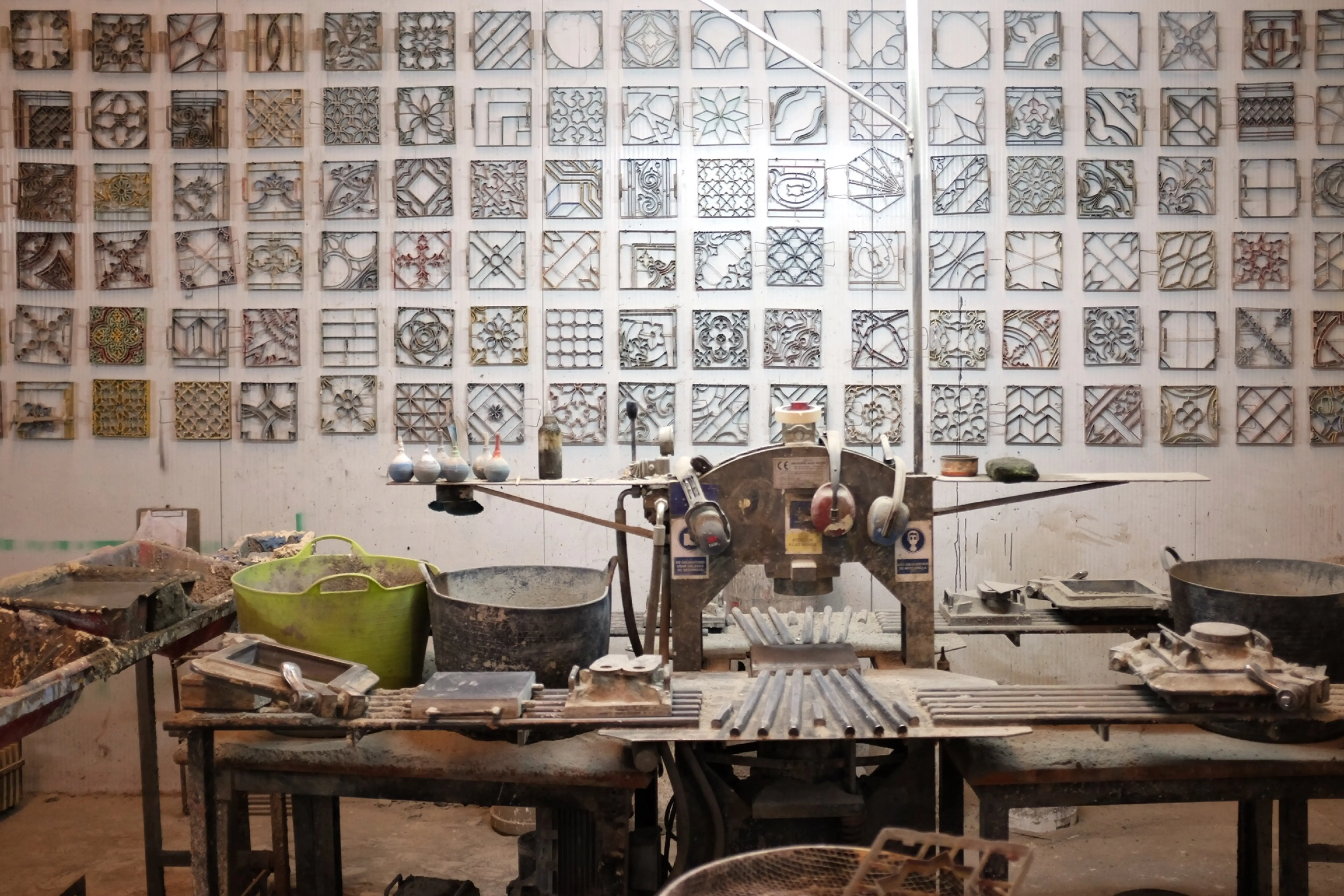
- Atelier in Sevilla. Photo by ACdO

- Making of Riad in Valcamonica, Italy. Photo by ACdO

- Coloring process. Photo by ACdO
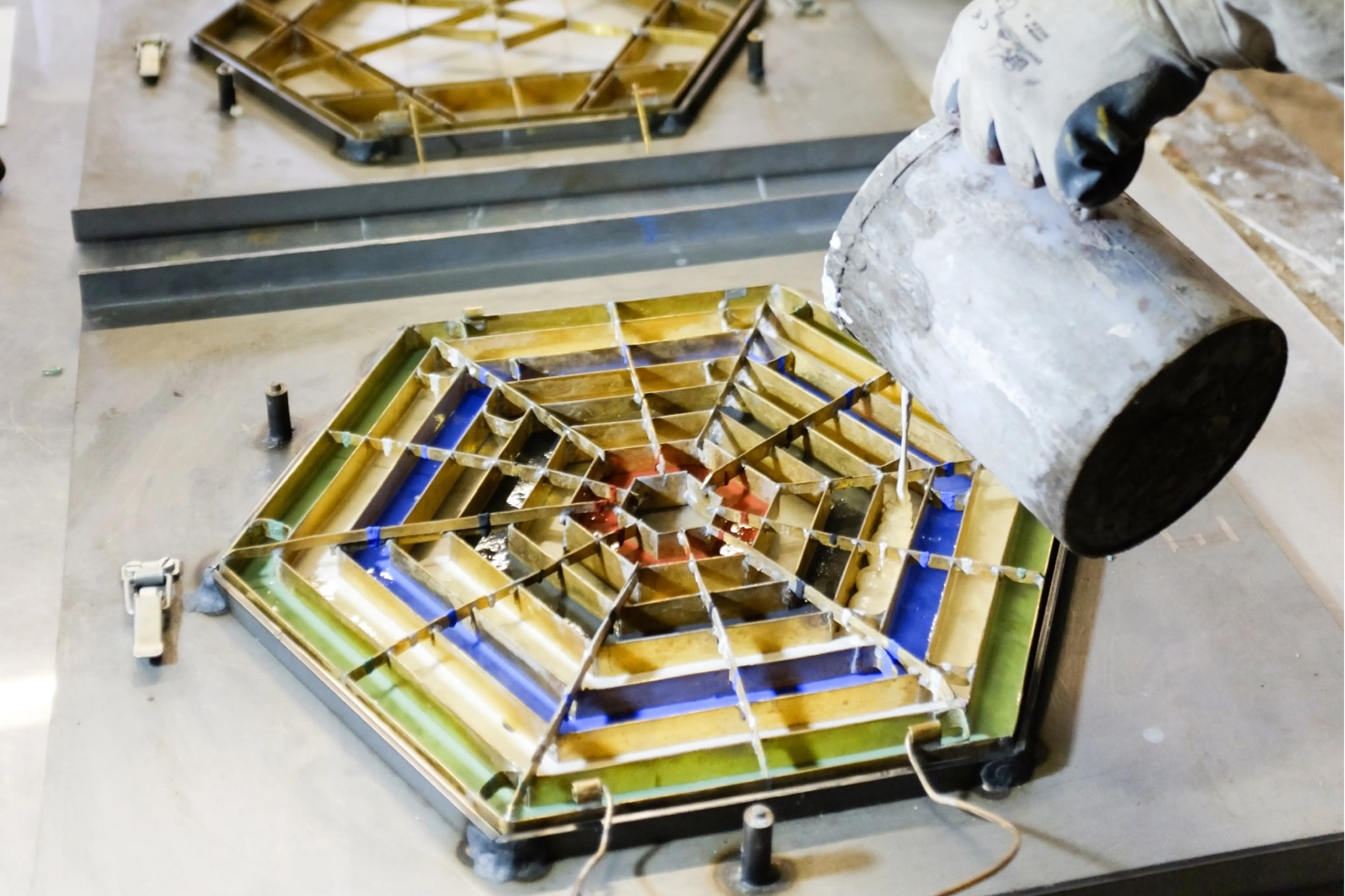
- Making of Riad. Photo by ACdO

- Riad table. Photo by Alfonso Herranz + Alicia
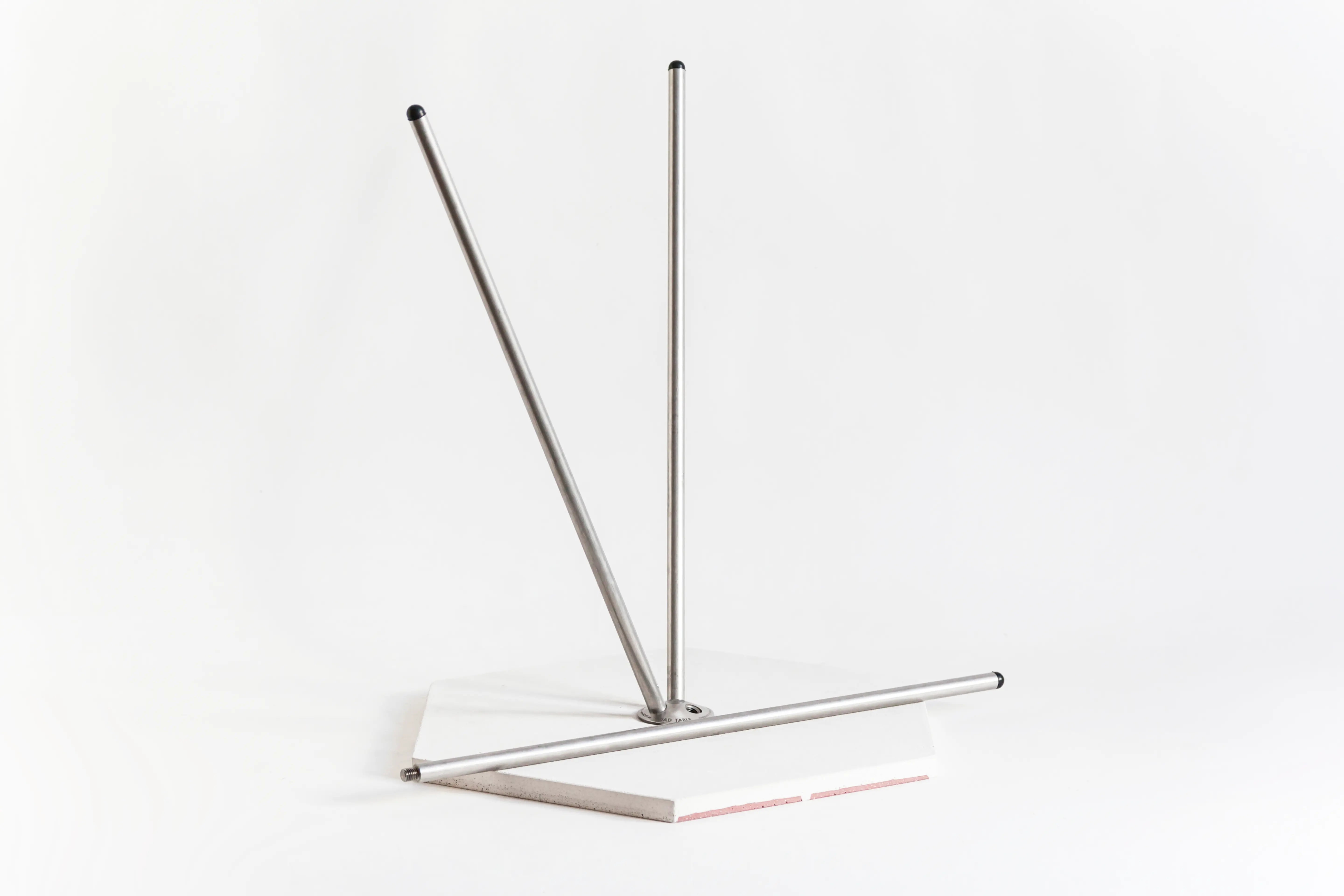
- Stainless steel legs. Photo by Alfonso Herranz + Alicia
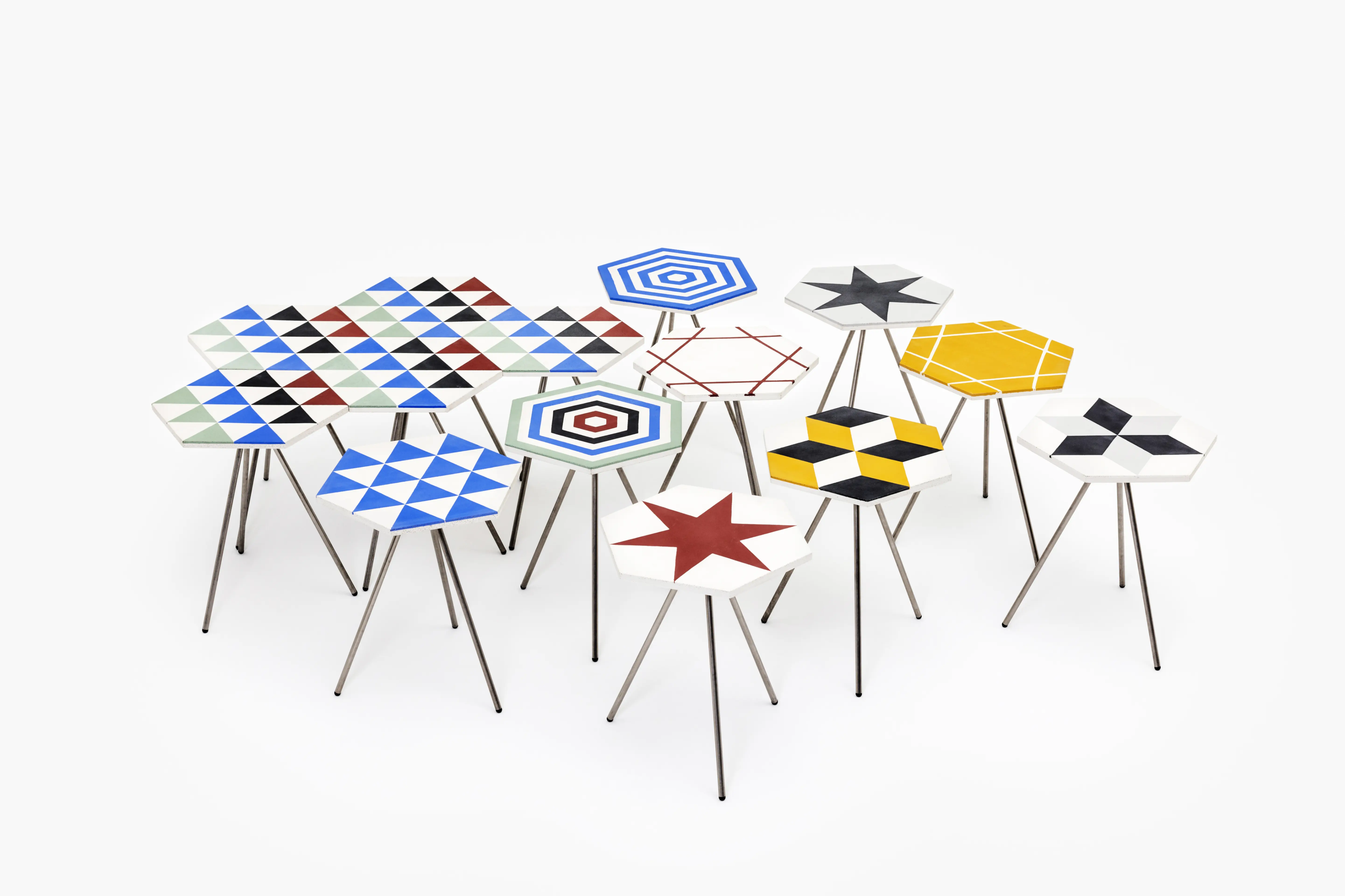
- Riad tables combination. Photo by Alfonso Herranz + Alicia

- Palermo 2 Riad tables combination. Photo by Alfonso Herranz + Alicia

- Cardboard packaging. Photo by Alfonso Herranz + Alicia
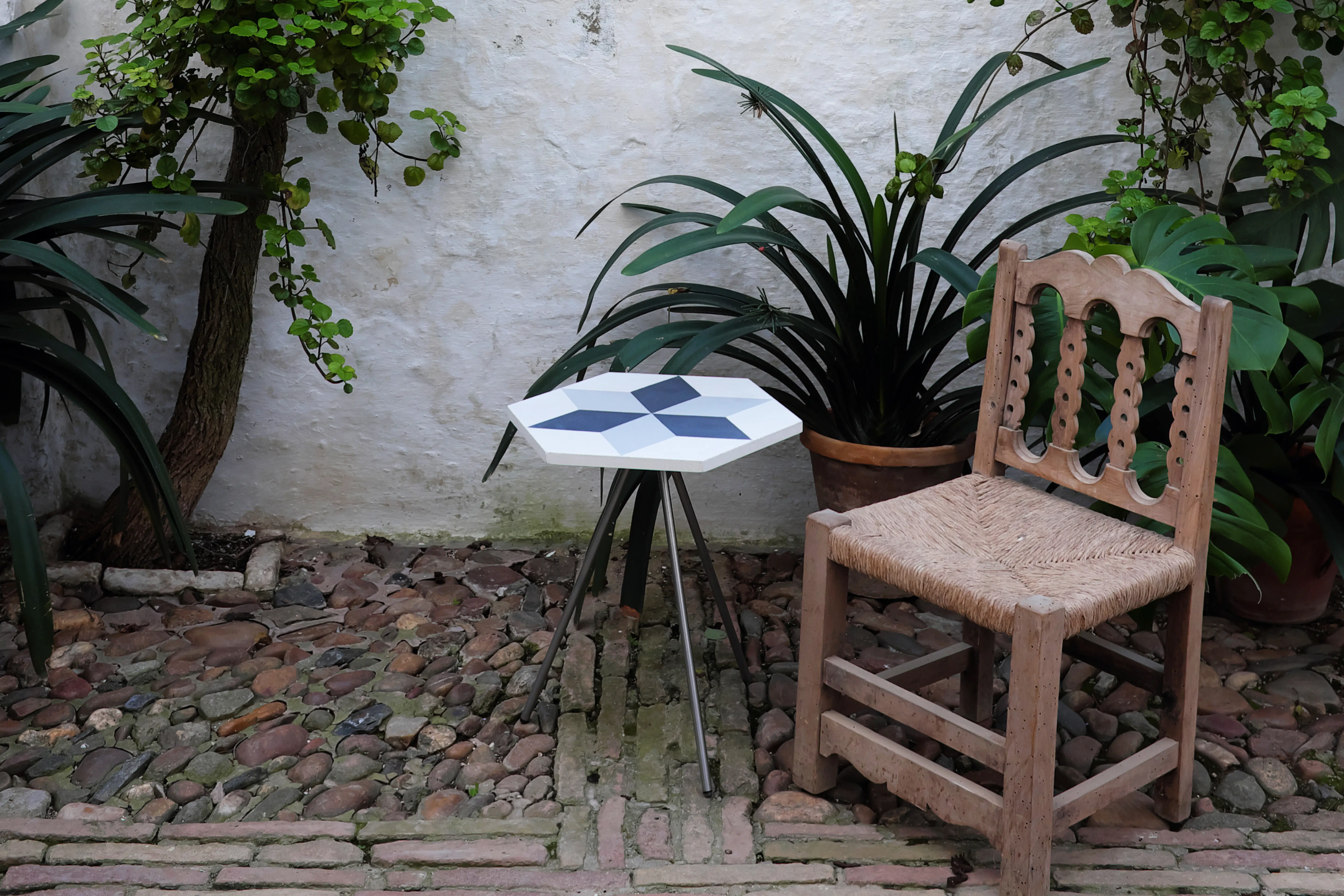
- Riad table outdoor. Photo by ACdO
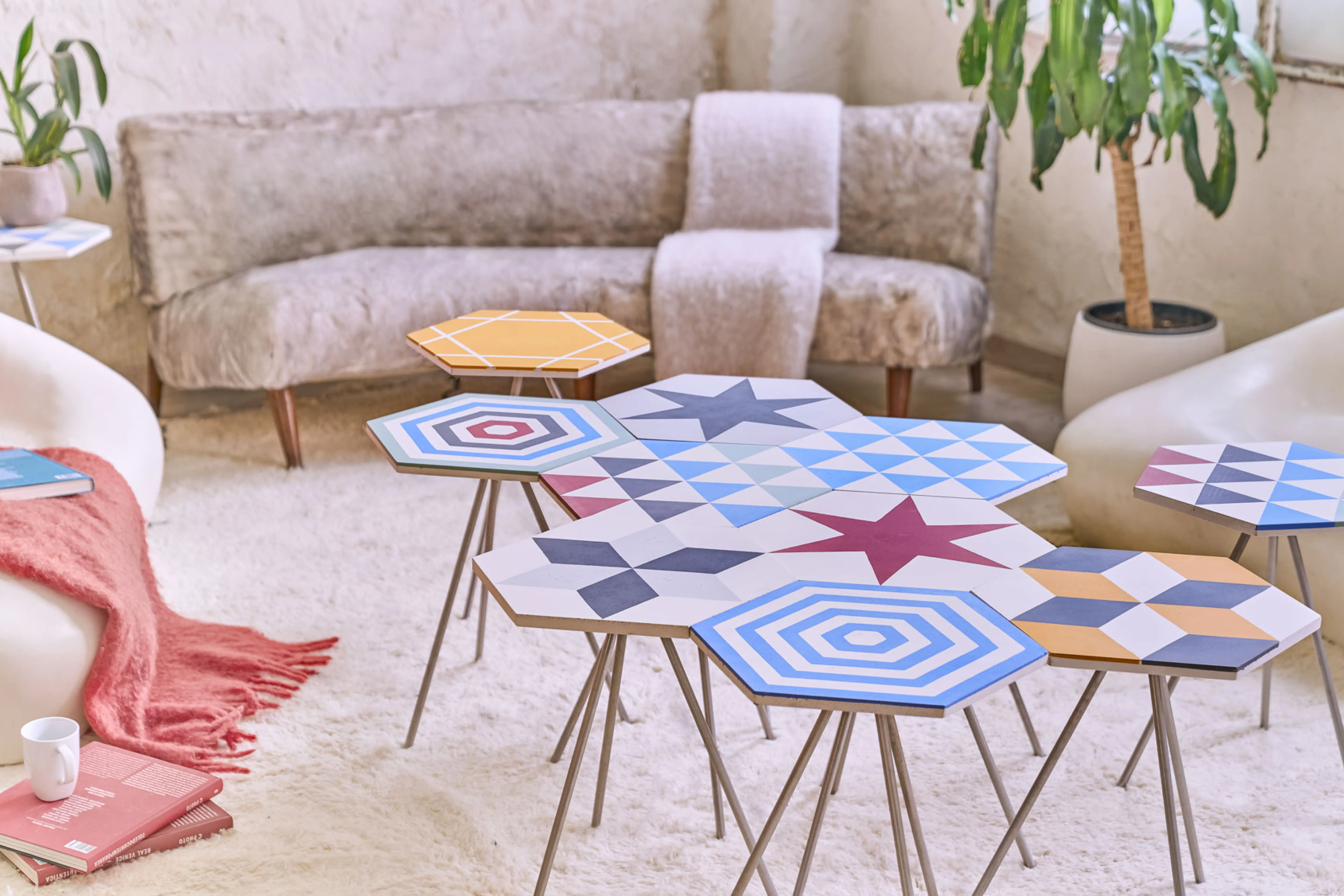
- Riad tables in living room. Photo by Manolo Yllera
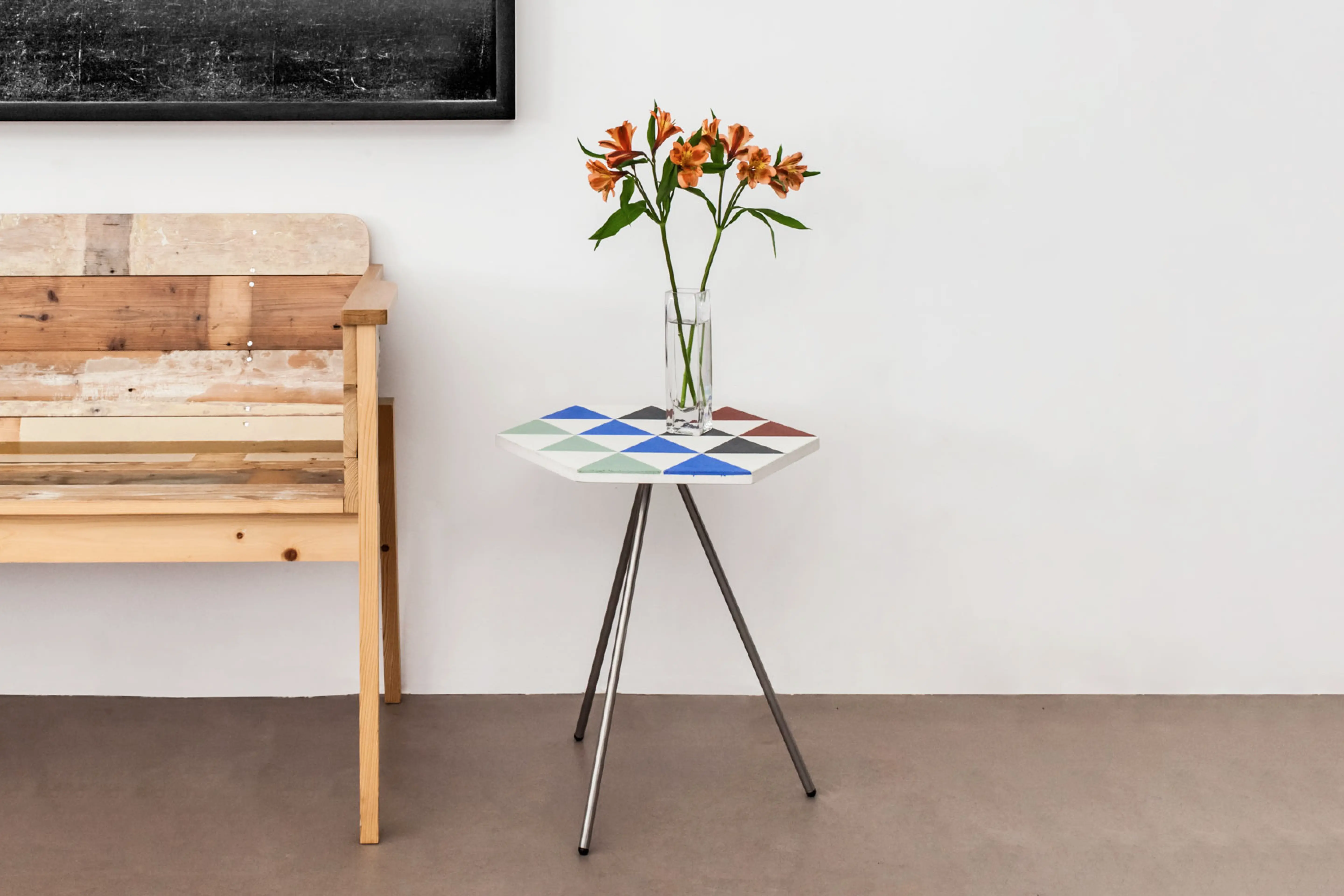
- Alhambra 2 Riad table in living room. Photo by ACdO
Riad

Riad arrives after the experience of the Prima table where we wanted to reduce the number of pieces needed to build a table to the minimum.
Traditional tile designs can spread infinitely by just repeating a single shape, creating patterns by combining different colors of the same material. The most efficient form, offering the greatest possibilities, is the rhombus. Three of them make a hexagon which is the best way to cover a surface. Using three colors you get a fascinating optical effect.
By putting together these two principles, we obtain the idea for this product: making a stool from a single basic piece (a leg with 1/3 of the seat), which repeated three times becomes a stool and many of them united create a borderless surface with infinite pattern combinations.
- Making of Riad. Video by ACdO

- Riad’s Inspiration. Photo by ACdO

- Atelier in Sevilla. Photo by ACdO

- Making of Riad in Valcamonica, Italy. Photo by ACdO

- Coloring process. Photo by ACdO

- Making of Riad. Photo by ACdO

- Riad table. Photo by Alfonso Herranz + Alicia

- Stainless steel legs. Photo by Alfonso Herranz + Alicia

- Riad tables combination. Photo by Alfonso Herranz + Alicia

- Palermo 2 Riad tables combination. Photo by Alfonso Herranz + Alicia

- Cardboard packaging. Photo by Alfonso Herranz + Alicia

- Riad table outdoor. Photo by ACdO

- Riad tables in living room. Photo by Manolo Yllera

- Alhambra 2 Riad table in living room. Photo by ACdO
At the very beginning of the project, playing with geometry was fundamental in order to find the appropriate shape. Then, we started to experiment and apply geometry to different materials and finishes which would slightly alter the product. Consequently, the project turned into research of materials and the different manufacturing processes associated with them.
It was not only pure geometry, but a deep study about different materials and those subtle modifications which determined a production process or another.
